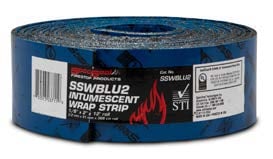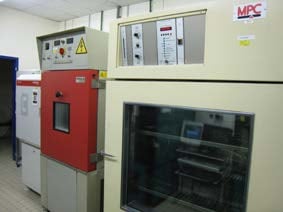Intumescent Firestops Grow Finer with Age
Intumescent firestop products, which are those materials that when heated will swell and expand in volume, are typically the best overall performers for most applications. Plastic piping firestop systems almost universally require some form of intumescent material since the combustible pipe will soften and eventually be consumed by the fire. However, a solution exists in the form of an intumescent wrap strip, collar or sealant installed around the pipe that will expand under fire conditions and shut down the plastic pipe by collapsing it as it softens. The fire is compartmentalized by the intumescent technology and a rated barrier. Insulated pipes, cables with combustible jacketing and even metallic pipes are also examples of where an intumescent material has utility as a firestop.
that will expand under fire conditions and shut down the plastic pipe by collapsing it as it softens. The fire is compartmentalized by the intumescent technology and a rated barrier. Insulated pipes, cables with combustible jacketing and even metallic pipes are also examples of where an intumescent material has utility as a firestop.
Most people reading The Burn are familiar with selecting the appropriate firestop system dependent on the relevant conditions and that UL 1479, “Fire Tests of Penetration Firestops” is one of the common methods of deriving these systems. What might not be obvious though is the additional requirements UL 1479 imposes on intumescent materials. Environmental exposure tests are currently prescribed in Section 9 of the most recent version of the Standard, which is the Fourth Edition (dated June 10, 2015). These tests first appeared in the Third Edition of the Standard when it was issued back in May of 2003, although the effective date for manufacturers to demonstrate compliance was May 23, 2006.
 The basic premise behind these aging requirements is the recognition that intumescent firestops function by expanding during a fire and through this expansion the material can serve to fill the void left by a combustible component within the firestop system. The intumescent material needs to be able to perform this expansion many years after the initial installation to be useful. Section 9 of UL 1479 simulates aging by exposing samples of intumescent material to high temperatures (158°F or 70°C for 270 days) and high humidity (97-100% at 95°F or 35°C for 180 days). The “aged” specimens are subjected to an expansion pressure test (i.e. pressure exerted during intumescent reaction) and an expansion factor test (i.e. total expanded volume), which both must fall within an acceptable range compared to the performance of the “unaged” samples during these same tests.
The basic premise behind these aging requirements is the recognition that intumescent firestops function by expanding during a fire and through this expansion the material can serve to fill the void left by a combustible component within the firestop system. The intumescent material needs to be able to perform this expansion many years after the initial installation to be useful. Section 9 of UL 1479 simulates aging by exposing samples of intumescent material to high temperatures (158°F or 70°C for 270 days) and high humidity (97-100% at 95°F or 35°C for 180 days). The “aged” specimens are subjected to an expansion pressure test (i.e. pressure exerted during intumescent reaction) and an expansion factor test (i.e. total expanded volume), which both must fall within an acceptable range compared to the performance of the “unaged” samples during these same tests.
The beauty of this entire process is that it occurs behind the scenes and is nothing the end users must worry about when selecting an intumescent material. The long-term suitability of intumescent products is automatically investigated by UL prior to those materials being included within their fire resistance directories. Please feel free to contact STI’s Engineering Services with any questions you may have on aging requirements.






